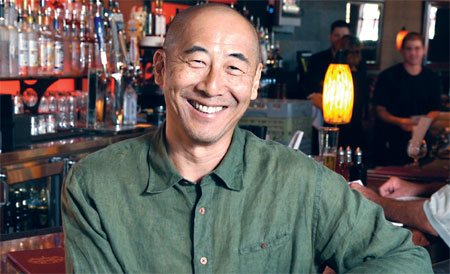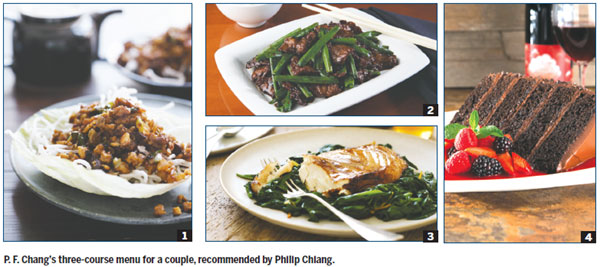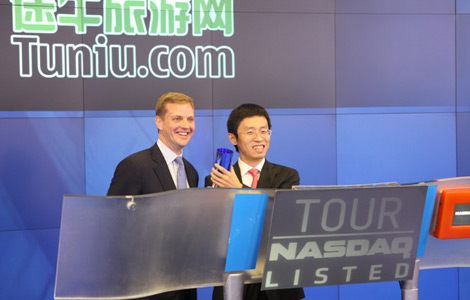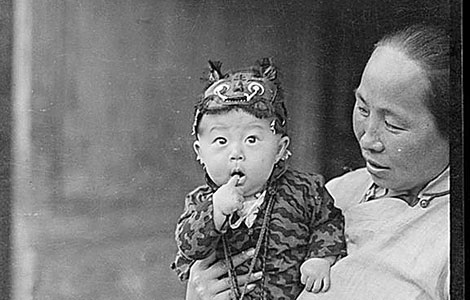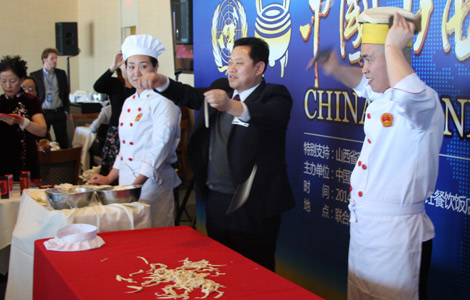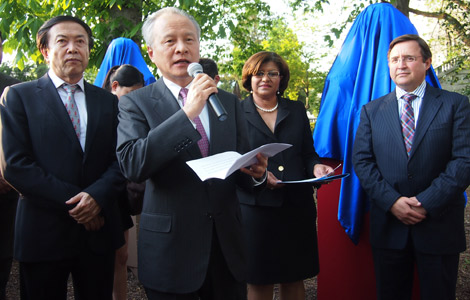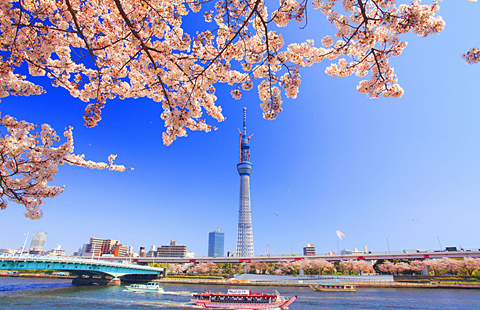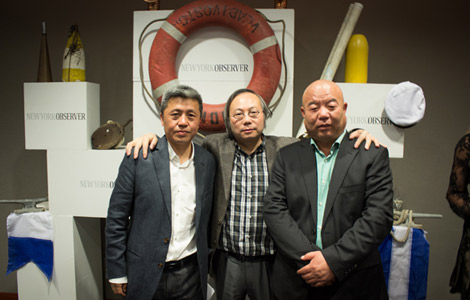Creating a global dining kingdom
Updated: 2014-05-09 11:36
By Cai Chunying (China Daily USA)
|
||||||||
There is Philip Chiang and P.F. Chang's. The former helped start the latter, which has become one of the biggest Chinese restaurant chains in the world, Cai Chunying reports from Washington.
|
Philip Chiang, the founding cuisine creator of P.F. Chang's. Photos provided to China Daily |
Philip Chiang never knew that his bohemian experiment of creating a salon-like restaurant where he can feed and entertain his fellow artists would lead to one of the biggest Chinese restaurant chains in the world.
P. F. Chang's, the full-service sit-down restaurant brand named with the slightly-simplified form of Chiang's last name and the initials of his partner, Paul Fleming, is a dining kingdom with annual revenue of $1.2 billion, 28,000 employees and 250 locations worldwide, 211 US restaurants and 39 international.
It all started with Fleming - now owner of a national restaurant chain, Fleming Prime Steakhouse, and a regional chain, Paul Martin's American Grill - dining at Chiang's small restaurant in Los Angeles in the early 1990s.
Fleming was so taken by Chiang's food that he asked Chiang to join him in creating a restaurant specializing in Chinese food but with Western-style service, a combination that is rare in the typical family-owned mom-and-pop Chinese restaurants scattered in every corner of the country.
So, the first P. F. Chang's opened in Scottsdale, Arizona, in 1993. And its signature was and remains Chiang's food.
"I want my food to be very clean and simple, but very tasty at the same time," said Chiang, who grew up in Shanghai and Tokyo before landing in San Francisco at age 14.
"I do not want my food to be starchy with brown sources or filled with unnecessary cheap ingredients just to make dish big," he said, inviting images of typical Americanized Chinese food.
And, the service at the first P. F. Chang's was typical of up-scale American restaurants where diners often are surrounded by distinctive dcor, soothing Western music and attentive waiters.
"We try to please a very large audience," said Chiang in an interview with China Daily. "You may call it the mainstream American audience."
Though the restaurant was very well received, to expand to multiple locations would take more than good food and service.
Fleming and Chiang soon got help from Richard Federico, then president of the Italian Concepts division of Brinker International, a leading name in the restaurant industry that owns Chili's Grill & Bar and Maggiano's Little Italy.
"My position at Brinker was as good a job in the restaurant industry as you can have," said Federico during an interview with China Daily. "But I am intellectually curious about a new brand that is filling the market place that nobody intended to fill."
|
1. Starter: CHANG'S CHICKEN LETTUCE WRAPS Wok-seared chicken, mushrooms, green onions and water chestnuts served over crispy rice sticks with cool, crisp lettuce cups. 2. Entre: MONGOLIAN BEEF Sweet, soy-glazed flank steak wok-seared with scallions and garlic. 3. Entre: OOLONG CHILEAN SEA BASS Line-caught, tea-marinated filet broiled in sweet ginger-soy, over warm spinach. 4. Dissert: THE GREAT WALL OF CHOCOLATE Six rich layers of frosted chocolate cake topped with semi-sweet chocolate chips, served with fresh berries and raspberry sauce. |
New brand
That new brand is P. F. Chang's.
"My desire is to try and build an Asian restaurant in multiple locations. That has never been done before," said Federico. "What I saw in P. F. Chang's is a brand that is not necessarily trying to be an Asian restaurant, but, rather, an upper-end casual dining restaurant that happens to serve Asian food. I found it to be uniquely different." Federico joined P. F. Chang's in 1996 as president and replaced Fleming to become CEO in 1997.
In recalling the contribution of P. F. Chang's founder Fleming, Federico said, "Paul is one of the best conceptual design folks in restaurant business. He understands where the consumers are going and get ahead of consumers. " Fleming remained on the company board until around 2003.
Under Federico's leadership, P. F. Chang's embarked on a fast-growth track.
By the end of 1998, there were 23 full-service restaurants across the US. In December 1998, P. F. Chang's parent company, P. F. Chang's China Bistro, Inc (PFCB), went public, offering 4,150,000 shares at $12 per share and becoming the first Asian restaurant chain to be listed on a US stock exchange.
To capture the audience that prefers a quicker, more casual dining experience with Asian cuisine, the company launched another restaurant line, Pei Wei Asian Diner, in 2000, selling noodle bowls, salads and small plates such as crab wontons. Federico said about 40 percent of Pei Wei's current 193-restaurant sales are for take-out. For P. F. Chang's, it's 15 percent.
P. F. Chang's also launched its pre-prepared frozen-food line in 2008 through a licensing agreement with Unilever. Now its products are available at about 33,000 locations in the US, including Target, Wal-Mart and many neighborhood grocery stores.
Even though there are more than 40,000 Chinese restaurants in the US, more than McDonalds, Burger King and Kentucky Fried Chicken combined, according to Jennifer 8. Lee, author of The Fortune Cookie Chronicle, a book surveying the history and status of Chinese restaurants in the US, Chinese food is the largest restaurant segment in the US that is not dominated by chains.
Yet P. F. Chang's manages to stand out and become one of the biggest Asian full-service restaurant chains in the US with about 6 percent of market share, according to Technomic Inc, a Chicago-based research firm.

For Philip Chiang, one of the reasons for the success remains constant, the food.
"Our food is consistent. We have certain traditions that we stick with and those are very important," said Chiang.
The main dishes offered at P. F. Chang's domestic and international locations have stayed much the same as those created by Chiang for the first P. F. Chang's.
Chiang calls his recipes a "refined" version of traditional Chinese food, which stresses the freshness of ingredients, simpler preparation process and sensitivity toward mainstream Americans' dining preferences that can be found in many other popular cuisines.
"Chinese food is so vast. It is not difficult for us to find the Chinese version of taco or Italian pasta. I try to adapt some of the Chinese food to what's evolving now with American public," said Chiang.
Chiang said when he travels, he seeks food that relates to his own taste of food - simple, clean, and well done. Then he thinks about how to present it to his American customers by refining it, for instance, shifting some of the ingredients or even the way the materials are cut to make his own creation.
"I am not trying to reinvent Chinese food. All I am doing is to refining it within the perimeters I set for myself and for P. F. Chang's," Chiang said.
Chiang's parents are both from an aristocratic class in China with private chefs preparing fancy food.
"I grew up with parents that we now call foodies. I always love dinning out. And I've always wanted to have a caf where my friends can gather," recalled Chiang who has a bachelor of fine arts degree from the Art Center College of Design in Los Angeles, one of the finest design schools in the US.
When Chiang's mother, Cecilia Chiang, a legendary restaurateur who often is credited with introducing a more authentic version of Chinese cuisine to the US, asked him to take care of her restaurant Mandarin in San Francisco while she was in China, he indulged himself in running the restaurant and ended up opening his own in Los Angeles where he met Fleming.
But even for a Chinese cuisine guru as Chiang, running a Chinese restaurant, not to mention a chain of them, is still very difficult.
"It's really hard to do. Even though we have so many restaurants, it is still difficult." said Chiang who now serves as culinary consultant and cultural ambassador for P. F. Chang's. "Chinese food is so labor intense. It takes more than strong financial backing to open a group of restaurants."
Cooking style
The cooking style required by Chiang for his P. F. Chang's chefs is wok cooking, authentically Chinese.
Wok cooking, as described by a Wall Street Journal commentary piece by Shirley Leung, is notoriously hard, demanding strength, alertness and tolerance toward strong flames. Yet P. F. Chang's has made this hard-to- copy cooking style duplicable through a rigorous training program. They do not hire chefs. They train them.
According to Chiang, the training discipline also applies to every segment of running a P. F. Chang's restaurant, be it as a server, bartender or kitchen helper.
"We have an extensive training program, probably one of the most extensive in the restaurant world. It's like going to a very top school. You really need to work your butt off in order to succeed," said Chiang.
He mentioned that when a new restaurant in an international market is to open, the whole team there would come to the US for four consecutive months of training.
"We do not take short cuts when it comes to train our new staff or for a new restaurant. Most people are not willing to do that, to put that effort to have a program that is difficult to execute. We demand a lot but the rewards are there. That's the only way we know how to do that," Chiang said.
For Richard Federico, the long-term CEO, the training is one of the central parts that ensures P. F. Chang's market dominance.
"Because it is very complex and difficult to execute at a very high level, we created a barrier of entry to our competitors," said Federico, pointing out that there are other large organizations trying to get into the niche market but have not been successful.
Patrick Scannell, operating partner of the P. F. Chang's restaurant in Chevy Chase, Maryland, an upscale residence and shopping area, said the training program has been one of the highlights of his eight years at P. F. Chang's.
"You met people who are so enthusiastic about what they do and embody everything that is P. F. Chang's," said Scannell, who joined P. F. Chang's right out of college and worked his way up to become, after being a chef and a trainer himself, head of one restaurant. "Now I want to do the same to my staff."
Scannell said his restaurant, which opened about three years ago, attracts an average of 300 customers on weekdays and 500 on weekends, a lower number compared to all P. F. Chang's restaurants.
Frank Spano is one of them, a particularly royal one.
"My time is amongst my most valued possessions. What I choose to do with what little free time I have available is a decision I make carefully; and yet I always found myself coming back to Patrick's P. F. Chang's," said Spano whose works covers national security and international law.
"Perhaps it is the welcoming atmosphere that feels like an extension of my living room, or perhaps it is that when I walk up to the bar the staff always knows my name and my favorite food and drink," he added.
P. F. Chang's restaurants are often situated in high-end shopping malls with decor that is eye-catching, such as a huge stone horses and life-size replicas of the terra cotta Xi'an warriors. The interior design usually is filled with classic Chinese paintings that depict scenes of life in ancient China.
Being able to understand and identify the kind of real estate that it takes to support P. F. Chang's concept, according to Federico, is another reason that contributes to P. F. Chang's success.
To ensure that P. F. Chang's is often the first choice for Asian food in any major market, Federico made every effort to build one P. F. Chang's in every major US city in its first expansion phrase, leaving the public with the impression of being the first-comer.
Going private
In May 2012, P. F. Chang's China Bistro, Inc (PFCB), was taken private by Centerbridge Partners, a New York-based private-equity company, for $1.1 billion.
Centerbridge offered $51.50 a share in cash to PFCB shareholders, which was about 30 percent higher than its then-trading price at NASDAQ.
"There is time to be private, and there is time to be public, and now private again," said Federico who also serves on the board of Domino's Pizza and Jamba Juice.
"Being private allows us to refresh our content without having to do it in public eyes, so we can be more patient, more thorough in our research and invest a little bit more and test more things to come up with what we think might be the next revolutionary thing for our brand," said Federico, adding that the company is now ready to enter a new phrase of expansion.
According to Federico, the company is experimenting with a new Sushi line. In recent years, P. F. Chang's has incorporated Southeast Asian cuisine to its offering such as Thai, Korean, and Singaporean, to meet the emerging trend in the Asian dining market.
P. F. Chang's also has a gluten-free menu, on top of its vegetarian menu, which is rare among Asian restaurants. Its dessert menu mainly draws on Western tradition with a bit of an Asian twist.
For Federico, the Oolong Chilean Sea Bass, a fillet marinated with the Chinese tea oolong (wu long) and broiled with soy source, ginger, garlic, and vinegar, is his all-time favorite, which Chiang picked as well when asked to recommend his favorite dish. Fleming could not be reached for this test.
"To partner with Philip Chiang and Paul Fleming is very unique. Each of us has a skill set that we brought to the party. That synergy is what created the P. F. Chang's of today," said Federico.
Contact the writer at charlenecai@chinadailyusa.com
(China Daily USA 05/09/2014 page20)
Most Viewed
Editor's Picks

|

|

|
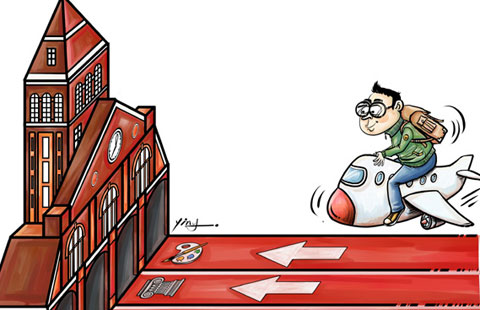
|

|

|
Today's Top News
China: Stop harassing oil rig in Xisha Islands
American's lens captures priceless Chinese May 4 history
Creating a global dining kingdom
Court ruling on protester unsettling
Alibaba, ShopRunner to launch joint China service
US museum to return statue to Cambodia
Thai PM faces ban from politics
China tops Global 2000: Forbes
US Weekly

|

|
